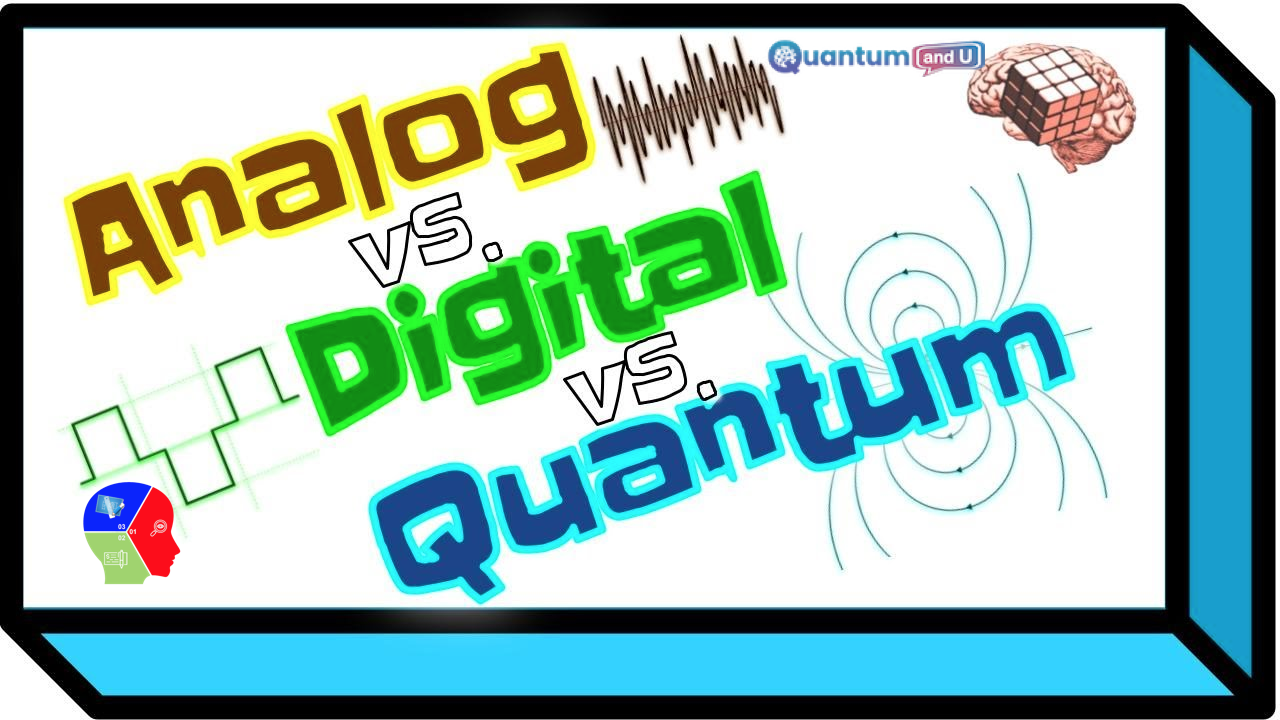
Introduction:
In this video, the presenter explores the concepts of analog, digital, and quantum information processing. The video begins with a comparison of clocks to illustrate the differences between these three approaches. It then moves on to use the analogy of a regular coin to delve deeper into each method’s characteristics and applications.
Related Sections:
- Analog Information: Analog signals are continuous representations of real-world measurements, such as sound waves in an ultrasound. While analog reflects the universe’s infinite range of colors, sounds, and more, it is susceptible to noise, degrading the transmitted information.
- Digital Information: Digital signals use binary digits (bits) to represent data as either 1 or 0. Unlike analog, digital signals are clean and reliable, making them ideal for transmitting and processing information. Higher resolution requires more binary digits.
- The Brain and Information Processing: The brain’s information processing is complex and not fully understood. Although neurons are often simplified as digital units, they behave more like analog systems, leading to ongoing research into understanding brain function.
- Quantum Computing: Quantum computing utilizes qubits, which exist in a state of superposition, representing both 1 and 0 simultaneously until observed. Quantum computers, when isolated to prevent quantum decoherence, can solve certain problems exponentially faster than classical computers, achieving “quantum supremacy.”
Conclusion:
Analog, digital, and quantum approaches represent three distinct ways of dealing with information. Analog reflects continuous real-world measurements but is prone to noise. Digital uses binary digits, providing a cleaner and more reliable method for information transmission and processing. Quantum computing, based on qubits’ superposition states, can solve specific problems exponentially faster than classical computers. It is important to recognize that quantum computing is fundamentally different from digital computing and cannot be directly compared to traditional digital systems.
Takeaway Key Points:
- Analog information is continuous and represents real-world measurements, but it is susceptible to noise and degradation during transmission.
- Digital information uses binary digits (1s and 0s) and offers a clean and reliable way of transmitting and processing data.
- The brain’s information processing is a complex interplay between digital and analog behavior, and further research is needed to fully understand it.
- Quantum computing utilizes qubits in a state of superposition, enabling the potential for solving certain problems exponentially faster than classical computers, achieving quantum supremacy.
- Quantum computing is fundamentally different from digital computing and should not be compared directly to traditional digital systems.


